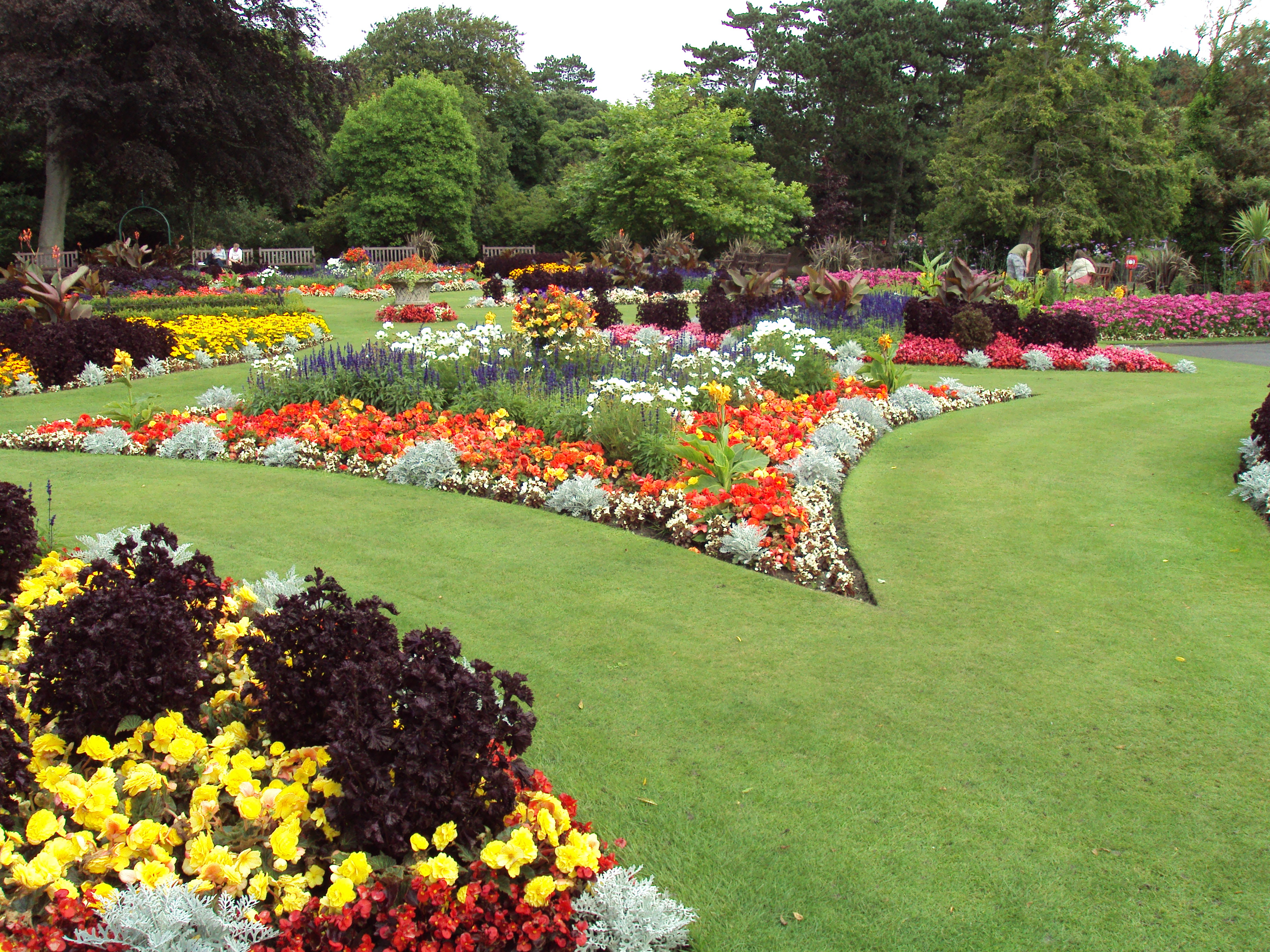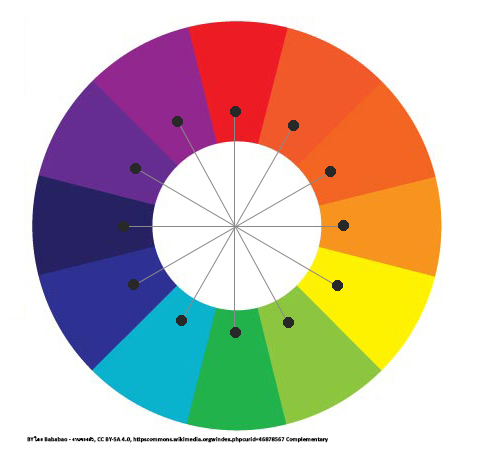By Sandra Nelson
While line, shape, form and texture tend to be the subtle elements shaping the viewer’s perception of a garden design, color is the one that jumps out and grabs you. It draws you in or pushes you away; it fires your emotions and stokes your energy level or it brings much needed peace to your life. Color is powerful.
Because of color’s power to influence, it is vitally important to once again consider the style of and goals for your garden before you begin to select a color scheme.
Is the space a personal, reflective spot for you alone or is it an energetic place to gather with family and friends? Will you visit early in the morning as the sun rises, during the heat of mid-day or late in the evening under moonlight?  Do you want to visually expand the space or draw it in to make it more intimate? What colors do you love? Once those questions are answered, only then it is time to select your color scheme.
Do you want to visually expand the space or draw it in to make it more intimate? What colors do you love? Once those questions are answered, only then it is time to select your color scheme.
Color sends subliminal messages and how we react to those messages is both highly personal and surprisingly cultural. A bride in the United States wears white, communicating innocence and purity, while a Chinese bride wears red to speak of her happiness, good luck and prosperity. In France and Germany yellow has been the color of jealousy and weakness, but in the several African cultures, yellow is the color of money, high quality and success. Here in the United States, yellow is often a happy, optimistic color — the color of sunshine and early spring forsythia and daffodils. Pink is thought of as a feminine, soft color while brown conveys an earthy stability. For more on color messages, read our blog, Understanding Color in the Garden at https://www.embassylandscape.com/blog/understanding-color-in-the-garden/
Just as our personality traits shape who we are, the characteristics of a color also play a role in how it is perceived and how well it combines with other colors. When describing color, experts often use terms like hues and values, tints and shades, high saturation, low saturation and a myriad of other terms that can become both overwhelming and downright discouraging to the novice garden designer. There are however, some basic, easy to understand principles that can help guide color choices. Studying a color wheel can help you see the relationship of colors and understand how to use those relationships to create an interesting and harmonious garden.
The primary colors of a color wheel are red, yellow and blue. Pure primary colors are the foundational colors from which all other colors are made. They are considered bold, attention-grabbing colors. The secondary colors — orange, green and violet — are created from balanced combinations of the primary colors. Tertiary colors, the third level, are made by combining the three primary colors, often a secondary color with a primary. Red-orange and blue-violet are some examples of tertiary colors. They are more complex colors, often used as accents.
If your garden goal is to have a vibrant, stimulating and exciting space, then select blooms with complementary colors to fill your beds. Complementary colors are directly opposite of each other on the color wheel. Red and green, blue and orange, purple and yellow are all pairs of complementary colors. Placing complementary colors next to each other, causes each color to appear more intense and visually exciting. This is why a pot of bright red geraniums with dark green leaves tends to catch your attention, even at a distance.
The brain is responding to the stimulation of the opposite colors. However, just as the brain rejects under-stimulation, it also rejects over-stimulation. It’s important to avoid the disconcerting and chaotic effect caused by using too many small, random patches of color. Instead, repeating a few masses of vivid colors creates a sense of both excitement and unity.
For those who are looking for a quiet, tranquil oasis, choose an analogous color scheme for the garden. Analogous colors sit next to each other on the color wheel. They blend well without fighting one another. However, because they blend so well, using them in equal proportions can easily become boring rather than captivating. (The brain seeks stimulation by some degree of contrast.). Try choosing one of the analogous colors to be predominant, usually the middle color on the color wheel, and allow the others to be subordinate. This will create a peaceful, quiet setting that still has the capacity to intrigue the viewer.
Another way to think about colors is by dividing them into two groups — warm colors and cool colors. Warm colors are made from reds, oranges and yellows; they are vibrant and tend to jump out at you. They stimulate the senses.  Cool colors, the blues, greens, greys and light purples, are calming and tend to relax you.
Cool colors, the blues, greens, greys and light purples, are calming and tend to relax you. 
Imagine how peaceful a meditation garden planted in blue hydrangeas and old-fashioned fragrant purple heliotrope would be. Compare that to the feeling that a garden space planted in bright red coneflowers surrounded by pure yellow coreopsis evokes.
Dark and light colors send messages too. Darker hues (variations of a color) communicate strength, power and authority and suggest elegance and richness. They tend to move forward and grab the attention.
On the other hand, lighter shades, even of the same color,create a softer, gentler effect that seems further away.
Add depth to a garden by planting darker shades in front with successively lighter shades behind them. The lighter shades will tend to recede into the distance.
Color theory offers us clearly marked paths to follow as we design our gardens, but we are certainly free to venture off the path on our own. When all is said and done, the colors you choose for your gardens should be the ones that will entice you to spend more satisfying time outdoors.












